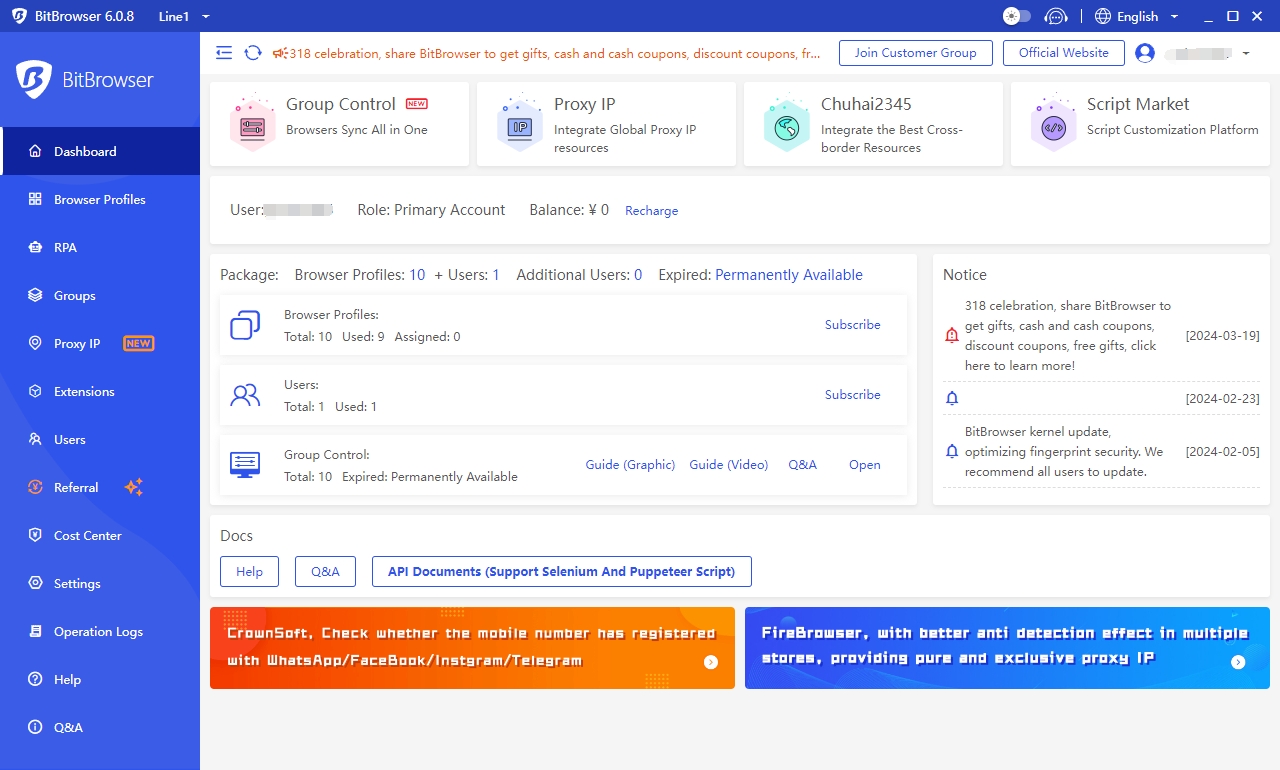
Hot Picks
How to run Facebook ads in 2025? Ideas

Hot Picks
How to promote on Amazon? Sharing various promotion methods

Hot Picks
Choose BitBrowser for fingerprint browsers, and look for the only official website: bitbrowser.cn
Can fingerprint browser detect the use of proxy environment?
Time: 2024-08-13 12:20 Click:

With the continuous development of network technology, fingerprint browser, as an advanced browser technology, has gradually shown its unique advantages in cross-border account management, privacy protection and other fields. However, when using fingerprint browser, a common question is: Can it detect and identify whether the user is using a proxy environment?
First, we need to understand the basic working principle of fingerprint browser. Fingerprint browser generates an almost unique identifier, namely "fingerprint", by collecting user's device and browser information, such as operating system, browser type, screen resolution, installed plug-ins, font list, language settings, etc. This fingerprint can track and identify user activities, and can achieve cross-session user identification even if the user clears cookies or switches IP address.
When users configure and use a proxy environment in fingerprint browser, this behavior itself does not directly affect the core function of fingerprint browser-generating and identifying user fingerprints. However, the proxy environment may affect some of the information collected by the browser, such as IP address and geographic location information. But it is worth noting that although this information is important, it is not the only component of fingerprint.
So, how does the fingerprint browser deal with the proxy environment? In fact, the fingerprint browser does not have the function of directly detecting the proxy environment, but can directly detect the matching environment information of the proxy environment. For example, the well-known fingerprint browser BitBrowser can detect whether the proxy environment is real in the browser, but the premise must be scientific Internet access and reasonable matching of the proxy, which is usually what BitBrowser officially says that the local environment needs to use global settings, and scientific Internet access is the key. If the local environment is not set to be independent, it will focus on the comprehensive characteristics of the browser and device, rather than a single network connection attribute. Therefore, even if the user is using a proxy, as long as other browser and device information remain consistent, the fingerprint browser can still identify the user's fingerprint.
However, this does not mean that there is no risk in using a proxy environment. The stability and security of the proxy environment are directly related to the user's network access experience and data security. If the proxy server is unstable or has security vulnerabilities, the user's network request may be affected and even face the risk of data leakage. Use BitBrowser, use proxy information data encryption to keep the online network environment independent and real, and can set up data caches that run independently.
The fingerprint browser itself does not directly detect whether the user is using a proxy environment, but it can identify the user's comprehensive fingerprint information and use the environment to build a proxy. When using a proxy environment, users need to ensure the stability and security of the proxy server to avoid potential network risks. At the same time, reasonable configuration and management of fingerprint browsers and scientific Internet access can better protect user privacy and data security.